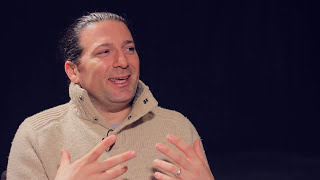In Chapter 3 of 16 in his 2010 Capture Your Flag interview, media platform IndieGoGo co-founder Slava Rubin answers "How Are Film Distribution Changes, Including Internet Streaming, Impacting What Defines Profitability in Filmmaking?" Rubin shares how film distribution model innovations, including online streaming, are building more direct audience connections and finding economic efficiency cutting out middlemen. Rubin references this relevance across iTunes, Hulu, Netflix and the assorted models from free, pay-per-view, video-on-demand, and subscription connecting content to audience.
Slava Rubin is CEO and co-founder of Indiegogo, the world's largest crowdfunding platform. Indiegogo empowers anyone, anywhere, anytime to raise funds for any idea—creative, cause-related or entrepreneurial. Prior to Indiegogo, Rubin worked as a management consultant. He earned his BSE degree from The Wharton School, University of Pennsylvania.
Transcript:
Erik Michielsen: How are film distribution changes, including internet streaming, impacting what defines profitability in filmmaking?
Slava Rubin: I think the way the film, video, TV, media world on the internet would evolve is still yet to be known. I think that Netflix is doing some amazing things, iTunes is doing some amazing things, Hulu, we`re getting TV everywhere. But I think it’` going to expand and evolve similarly to the way TV today is, there are different flavors. There is free TV, there’s commercial TV, there’s PPV TV, there are pay channels. I think all of those opportunities will find themselves also on the internet. When the internet and TV converge that will happen more and more, but I think profitability is tricky. I think one of the key factors [pause] that slowly all those middle men are getting torn away.
So, it`s all able creating your own brand, creating your own following and perpetuating by profiting as much as possible by not giving away all your margin to all those middle men and all those aggregators. You asked me specifically about streaming but I think this can be true for any of the various forms of distribution, where really it`s evolving and it`s more of a direct connection with your audience.























